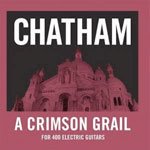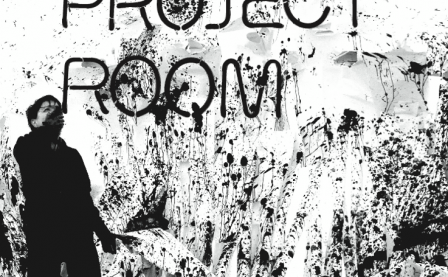When talking about expanding modern guitar literature, the names Glenn Branca and Rhys Chatham seem most prominent. Both found success by blurring the lines between rock and modern composition, a method achieved simply by employing drums and guitar in unconventional formats. Listening to Chatham's recordings particularly brings to mind how limited other "rock" bands' use of guitar is; though, somewhat ironically, the opposite is true when listening to Chatham's drummers: most served as metronomes.
In a sense, a steady beat grounded a lot of Chatham's work, reigning it in to the 'rock' territory. A Crimson Grail, his 2007 release, steers clear of any possible pigeonholing, instead focusing on the impact of 400 guitars sounding off at once. Logistically, the recording could only be captured live (in Paris), and inevitably, there's no way to really gage the impact of 400 guitars in that natural setting. But A Crimson Grail is probably the best representation we're going to get.
Just play it as loud as you can. When the guitars really start churning, the sound is unbelievably huge and somewhat foreign. It's not often that we hear 400 guitars liberally bouncing on top of each other, trying to cover the fullest sonic range possible (maybe on the last Smashing Pumpkins album?). Unlike most guitar worshippers, Chatham is careful to employ beautiful, lingering open chords, which highlight the natural overtones of the guitars to great effect.
The first movement constantly pulsates from within, using Brian Eno's serene ambience as a reference point. But the guitars are so textured that when an incredibly beautiful, consonant climax is reached 18 minutes in, you're left holding your breath. In the right setting, it really is powerful stuff. The second movement is more spaced out, with guitars chiming at the top of every measure, resulting in a firmer "traditional guitar sound." It starts swirling halfway in and ends with pummeling cymbal crashes, but it really serves as a middle piece in preparation for the rousing finale, which takes the first movement's dynamic and basically turns it up to '11.'
A Crimson Grail’s only foreseeable downfall is in its bootleg feel, which features loud track interim applause, as if someone was holding a mic with one hand and clapping with the other. But when you're in the middle of a movement, all is forgotten; it feels like the show could have been recorded with a Talkboy and still turned out gloriously. It's worth it just to hear a documentation of such massive, inventive, and almost religious use of the guitar.
1. A Crimson Grail Pt. 1
2. A Crimson Grail Pt. 2
3. A Crimson Grail Pt. 3
More about: Rhys Chatham




